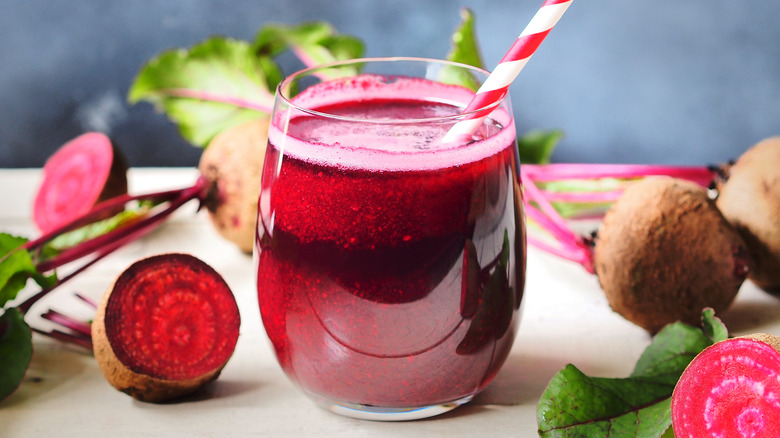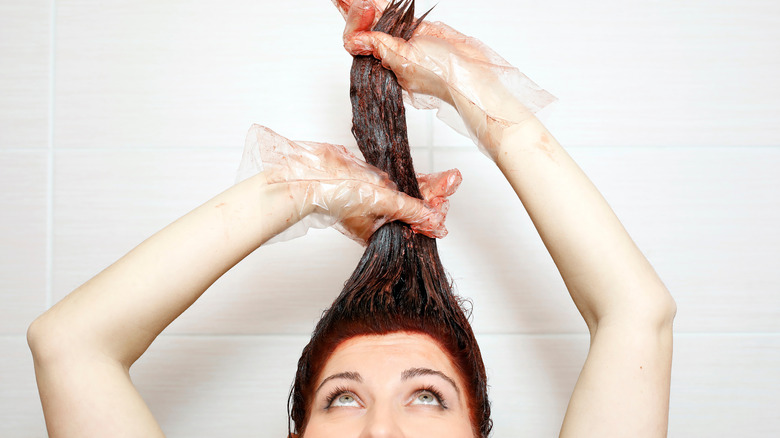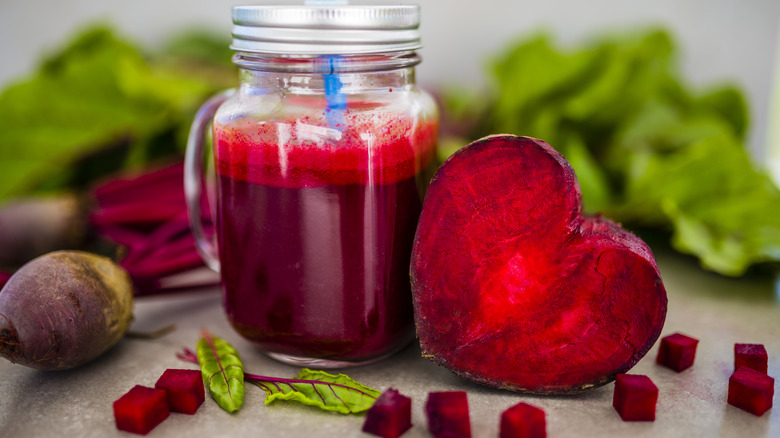What Really Happens When You Dye Your Hair With Beet Juice
Changing your hair can be liberating. Cutting off a few inches to lighten the load or switching up the color can be transforming. But many do not want to jeopardize their hair's health with box dyes. The chemicals in dyes can contribute to hair thinning and scalp irritation, according to Cleveland Clinic. Many contain harsh ingredients like ammonia and paraphenylenediamine. Even lead acetates which the FDA had revoked the approved use of.
With the risk of box dyes ruining your hair, at-home hair coloring might seem off the table. But here comes natural hair dye to the rescue. According to Medical News Today, natural dyes are plant-based and forgo the harsh chemicals traditionally used. However, some dyes marketed as natural still contain chemical additives. Creating your own dye will ensure it is right for you and your hair type. If you're looking for a dark brown color, you can try dyeing your hair with walnut shells For a deep red tint, try using beetroots.
How to dye hair with beets
Beets are a versatile plant. If you ever chopped beetroots, you'll have noticed its juice staining your fingertips. Beets are great for muscle recovery and freshening your hairdo. Using beet juice for dyes is a centuries-old trade, according to Beauty Glimpse. It is the betacyanins in beets that give the root its dark hue. You can use the juice to transfer those red tones to your hair. Simply whisk together beet juice with coconut oil to create a hair mask. Let the dye soak into your strands for a few hours before rinsing and conditioning.
For an easy concoction, Naturally Curly suggests mixing beet juice into a sulfate-free shampoo. The more beet juice the deeper the hue will be. Let the shampoo sit in your hair for at least 15 minutes, but for a darker color, the longer the soak the better.
Treat yourself to an added scalp massage while your strands get a new color. Beauty Glimpse recommends combining beet juice, shredded ginger, and olive oil for amplified moisture. Add a teaspoon of ginger and two teaspoons of olive oil to your root juice. Massage this onto your scalp for five minutes. Continue to apply the mixture throughout your hair and let it immerse for a few hours before a cold rinse and condition. Beet juice will dye your strands but also comes with other hair benefits.
Hair benefits of beets
Along with your new red do, beets can improve your hair health. The properties in beets can be a natural remedy for dandruff. According to Just Beet It, applying beet juice to your scalp can help soothe the itchiness and production of flakes caused by dandruff. For dry hair, beets provide moisture and shine. Say goodbye to dull and lifeless. Eating beets can also increase vitamins A and C, along with minerals like iron, magnesium, folate, and potassium. These nutrients help with hair health and growth.
EMediHealth warns that those with pre-existing scalp conditions and sensitive skin should be cautious before applying beetroot to their scalp. It is always best to make an appointment with a dermatologist if you experience scalp sensitivity. You can conduct a patch test by applying the beet mixture to a small portion of your scalp and monitoring your skin's reaction. Keep in mind beet juice stains, hence its dyeing power, so keep it anyway from anything you don't want red.


